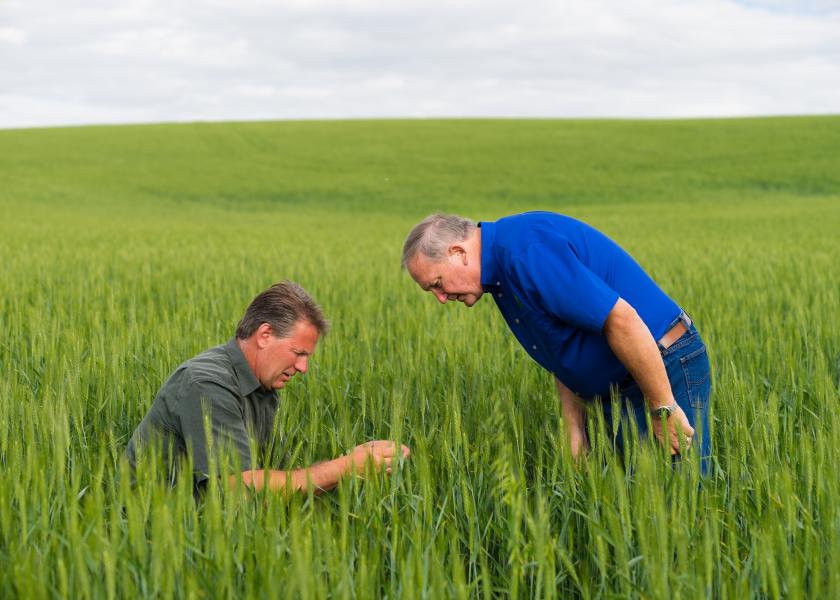Resources Available to Stack Conservation Programs

By Kathy Meyer
It takes intentionality to meet the requirements, but it’s possible to layer federal and private conservation programs to add extra cash to your bottom line.
“When carbon programs are appropriately stacked with other conservation-focused revenue opportunities, it’s possible for a farmer to achieve an additional six figures of income to a midsize farming operation,” says Cody Barilla, a grain analyst for Terrain.
Barilla, who also owns farmland near Strafford, Kan., started looking for a “unicorn” carbon market for farmers and found an overwhelming amount of options.
With each program having unique rules, regulations, contract limits and payment structures, Barilla published a research report titled “Monetizing Conservation,” to help farmers explore the options.
He advises farmers to be aware of the contractual obligation, compensation and required practices.
Jump The Hurdles
The record keeping and documentation needed to meet conservation program requirements deter many farmers.
“Awareness of these programs and technical assistance to help is somewhat lacking, yet growing. To help remove this barrier, NRCS offers a network of Technical Service Providers (TSP) that can help farmers design and implement a plan that meets requirements,” Barilla says.
Noah Goza, a certified TSP with Heartland Soil Services, notes soil sampling, VRT application, cover crops, changing equipment to facilitate drilling, no-till or strip-till, and paying an agronomist to help plan how these practices fit together can add to the cost of production.
“The biggest challenge I see with farmers wanting to implement conservation practices is cost; there are costs associated with changing how we farm to be better stewards,” he says. “The good news is there are dollars available to help offset some of those costs.”
Goza adds another challenge farmers could face is access to the technical assistance needed for new conservation practices. He encourages them to contact their local NRCS office and recognize if they need help from a TSP as well.
If a farmer enrolls in a program and elects to work with a TSP, the TSP will help create a compliant plan, implement it and submit the required paperwork to NRCS.
“If a farmer chooses to work with a TSP, NRCS can add funds to the contract to help pay for it,” Goza says. “It’s a win because the farmer can work with a specialist that understands the practice requirements and brings experience to create the best plan for their farm. Plus, it eases the workload for the NRCS field office staff so they can assist other farmers.”
Federal Conservation Programs
According to Barilla, approximately $20 billion of Inflation Reduction Act funds will be used for the USDA’s Natural Resource Conservation Service (NRCS). Of that funding, $8.45 billion will go to the Environmental Quality Incentives Program (EQIP) and $3.25 billion will go to the Conservation Stewardship Program (CSP).
Further funding of $3.1 billion is allocated to Climate-Smart Commodities projects.
Stacking Conservation Programs
While stacking programs for the same practice on the same acre, is often prohibited, a privately funded carbon program can potentially stack with a federally-funded one.
“I recommend finding a supply chain program that pays a premium for grain grown under sustainable/regenerative ag practices or a non-federally funded carbon program, and you can find ways to combine either of those with an NRCS program,” Goza says.
Barilla agrees the best approach is to stack a federal conservation program such as EQIP and CSP with a private program (supply chain or carbon market).
“I would like to test drive a carbon market on a portion of my farm with the confidence of also having an EQIP or EQIP-CIC contract,” Barilla says. “I am exploring carbon markets to find the optimal stacking opportunity if I have a funded EQIP or EQIP-CIC contract.”
He also reminds farmers to keep in mind that only one carbon acre can be sold at a time.
Successful Stacking
Jason Ochs, Kansas farmer and American AgCredit board member, has participated with CSP for over a decade, and he’s currently filing to enroll in EQIP and Climate-Smart Commodities grants.
Ochs farms with his wife, brother and sister-in-law on 15,000 acres near the Kansas/Colorado border. They grow wheat, grain sorghum, corn and are experimenting with camelina, an oilseed crop that might offer potential for biodiesel, jet fuel and other uses.
“We’ve done minimal till for several years and are converting some of the farm to no-till because we need to keep as much residue on the ground to make the best use of our rainfall being as low as 14" to 16" in some years,” Ochs says. “We use stripper headers that take heads of wheat to keep the straw tall so the sun doesn’t burn the soil and helps keep it cooler.”
Ochs says the biggest hurdle for their farm to participate in the conservation programs was the feeling of being overwhelmed by the options. They worked with Heartland Soil Services and Soil Regen with their TSP services to narrow the focus.
“Stacking conservation programs to maximize income is tricky. For instance, if you’ve no-tilled in the past or used cover crops, you can’t enroll in some, and you can’t do two carbon programs on the same acre. Partners like Terrain, American AgCredit and others help us put the puzzle pieces together,” he says.
Ochs’s best advice: “Find a mentor. Ask them what worked, what didn’t and why. Find experts with experience educating people on programs that exist, which many farmers don’t know exist.”
For farms either currently practicing conservation or planning to add a conservation practice to their operation, documentation is a high-value use of time.
“Participating in these conservation programs is not going to completely change the way you farm,” Barilla says. “Approach it as supplementing your farm income by implementing new conservation practices and adding another income stream. Look into the potential. It’s a great way to increase the value of the time you’re already investing, and there are sources to help you.”







